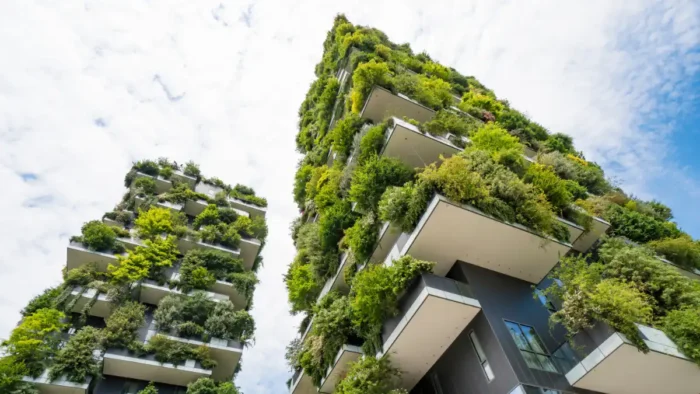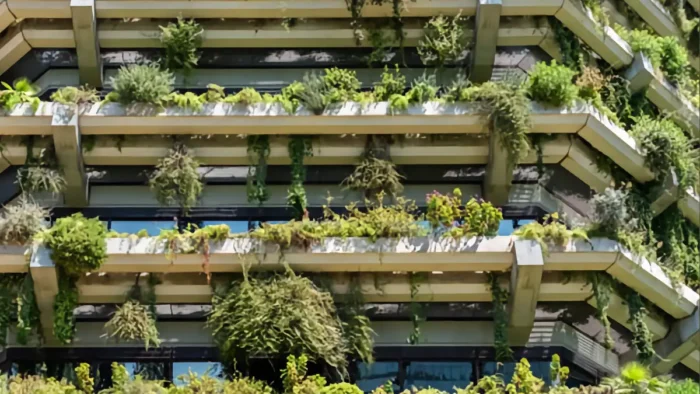The spotlight is increasingly turning towards commercial buildings as the world grapples with the urgent need to address climate change. Large buildings used daily are significant contributors to greenhouse gas emissions, but they also hold the key to a more sustainable future. Achieving net-zero emissions in the construction and operation of buildings is a crucial step towards successfully managing climate change.
This blog will explore some actionable tips for transforming buildings into eco-friendly, energy-efficient structures and contributing to a greener, more sustainable future.
1. Adopt Energy-Efficient Design
The foundation of any green building initiative begins with energy-efficient design. Architects and designers are pivotal in optimizing the orientation, layout, and materials used in construction to maximize natural light and ventilation.
Passive design principles can significantly reduce the need for artificial heating and cooling and, in such a way, reduce energy consumption.
2. Invest in Renewable Energy Sources
Investing in renewable energy sources is one of the most effective ways to reduce a building’s carbon footprint.
Solar panels, wind turbines, and geothermal systems are feasible options to generate clean, sustainable energy. Governments and organizations worldwide are increasingly offering incentives and subsidies to promote the adoption of renewable energy solutions.
3. Upgrade Insulation and Windows
Proper insulation and high-performance windows are critical for maintaining a comfortable indoor environment while minimizing the need for heating or cooling.
Upgrading insulation and windows can significantly enhance a building’s energy efficiency, helping to reduce energy consumption and associated emissions.
For example, when I changed my office’s windows to be more eco-friendly, my energy bills dropped by 20% for cooling and heating.
4. Implement Smart Building Technologies
Automated lighting, heating, and cooling systems can adapt to occupancy patterns, ensuring energy is only consumed when and where needed.
Pairing these smart, innovative systems with energy-efficient equipment, like LED lighting, will provide the lowest amount of waste.
For example, having 4ft LED tube lights throughout an office set up with smart controls that dim lights during bright times of the day and turn completely off in spaces with low usage (like supply closets and bathrooms) will ensure minimal electricity draw from lighting.

5. Prioritize Sustainable Materials
The selection of construction materials profoundly impacts a building’s environmental footprint. Opting for sustainable materials such as recycled steel, bamboo, and reclaimed wood can significantly reduce the incorporated carbon of a structure. Additionally, using locally sourced materials can minimize transportation-related emissions.
6. Implement Water Conservation Measures
Water is a precious resource, and green buildings should aim to minimize their water consumption. Installing water-efficient fixtures, rainwater harvesting systems, and greywater recycling technologies can contribute to significant water savings.
7. Promote Green Roof and Wall Systems
Green roofs and walls provide many environmental benefits, including improved insulation, reduced urban heat island effects, and enhanced biodiversity. These features contribute to a building’s sustainability and create visually appealing and healthier spaces for occupants.
8. Encourage Sustainable Transportation
Consider the location of a building and its accessibility to public transportation, walking, and cycling.
Encouraging sustainable transportation options for occupants can further reduce the overall environmental impact of a building.
9. Leverage Certification Programs
Certification programs like LEED (Leadership in Energy and Environmental Design) provide a framework for assessing and recognizing green building practices. Achieving certification not only validates a building’s sustainability but also enhances its market value and appeal.
10. Educate and Involve Occupants
The involvement of residents is crucial in achieving and maintaining a building’s sustainability goals. Educate residents about energy-saving practices, waste reduction, and the importance of their role in minimizing the building’s environmental impact.
Transforming commercial buildings for a greener future is a multifaceted endeavor that requires a holistic approach. By integrating sustainable design principles, renewable energy sources, and innovative technologies, big and small businesses can become influential contributors to the global effort to achieve net-zero emissions.





